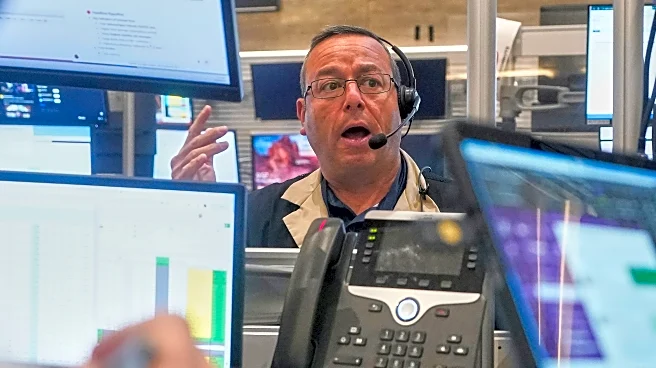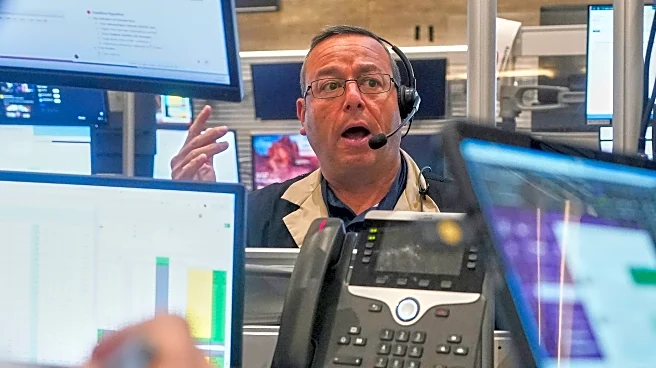What's Happening?
The latest U.S. inflation report has reinforced expectations for a Federal Reserve rate cut in September. The personal consumption expenditures price index rose 2.6% in July year-over-year, aligning with Dow Jones estimates. Core PCE, excluding food and energy prices, increased by 2.9% year-over-year. This data has bolstered stock market performance, with the S&P 500 reaching a record high. Economists, including Chris Rupkey from FWDBonds, suggest that the Federal Reserve's Federal Open Market Committee is likely to proceed with a rate cut, given the current inflation figures. Traders are pricing in an 87.2% probability of a quarter percentage point rate cut, according to CME Group's FedWatch tool.
Why It's Important?
The anticipated rate cut by the Federal Reserve is significant for the U.S. economy and financial markets. Lower interest rates can stimulate economic growth by making borrowing cheaper, potentially boosting consumer spending and investment. However, rising inflation could complicate future monetary policy decisions, as the Fed balances rate cuts with inflation control. Investors and businesses may benefit from lower borrowing costs, but persistent inflation could pose challenges for long-term economic stability.
What's Next?
Investors are awaiting the August U.S. jobs report from the Bureau of Labor Statistics, which will provide further insights into the labor market. The Federal Reserve's decision in September will be closely watched, as it could set the tone for future monetary policy actions. Market participants will also monitor inflation trends and economic indicators to assess the Fed's ability to manage inflation while supporting economic growth.













